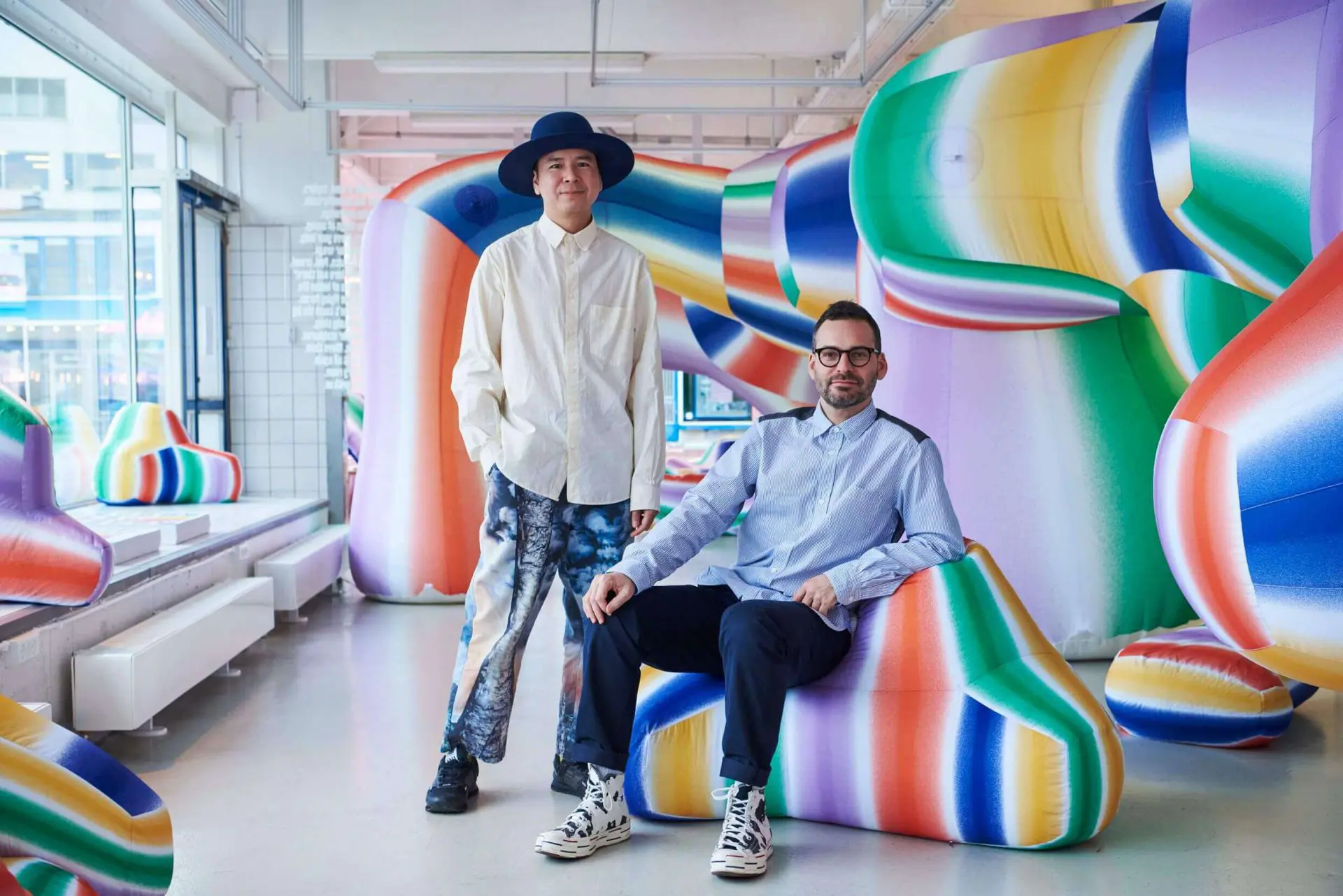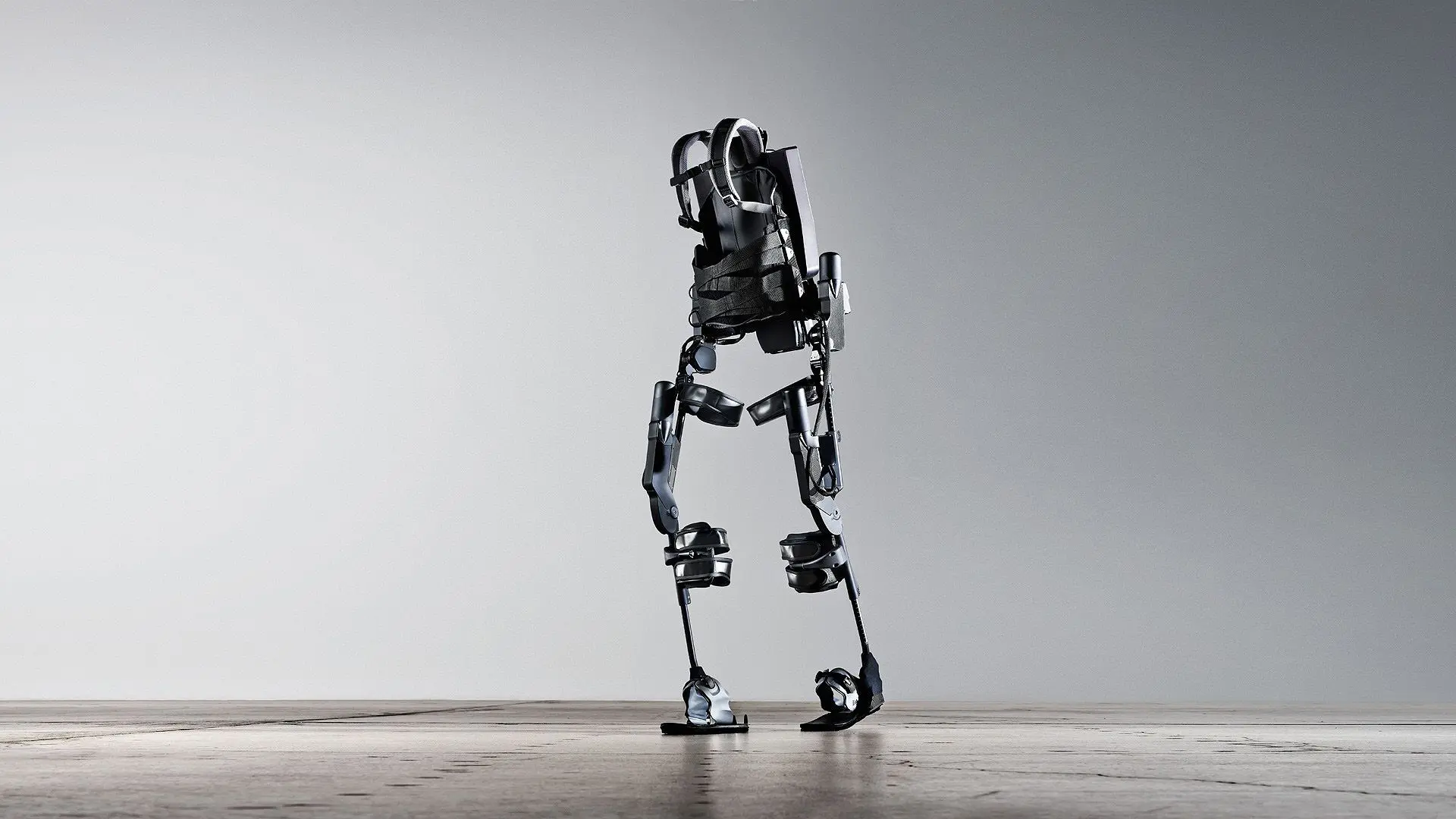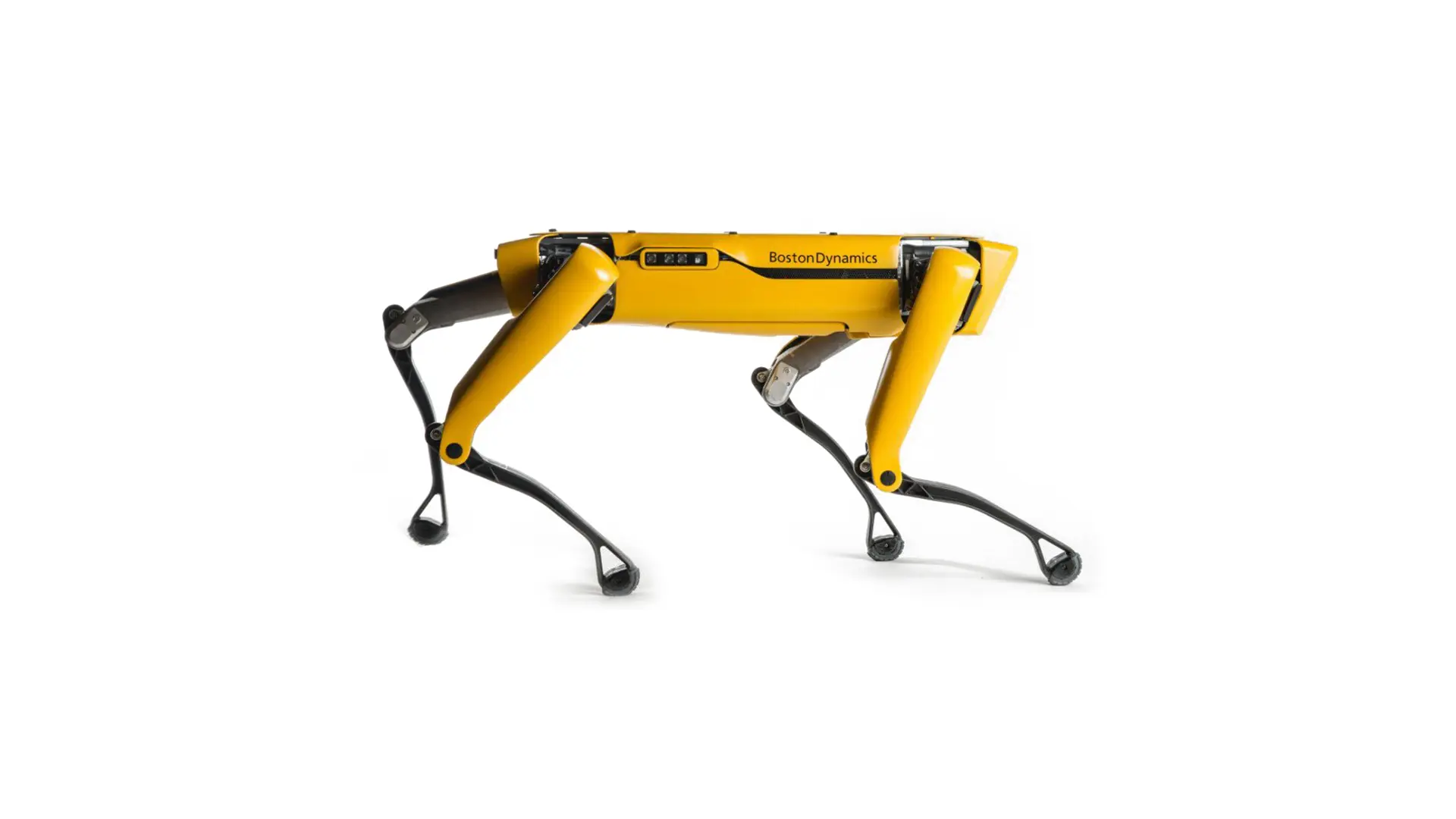Metaverse—A new world for digital designers? (We asked 3 of them)
How realistic is the metaverse and what impact will it have on designers? We spoke to 3D experts to get their thoughts…

What is the metaverse?
In short, it’s a virtual reality version of the internet, a hypothesized version in which users can engage with one another as well as the computer-generated environment that surrounds them.
As a concept, it’s an idea in its infancy but if reports are to be believed the metaverse could transform the way we interact online, how brands communicate, and how we experience events like live concerts, sports and political announcements.
More importantly for us, however, is the impact it might have on the design world.
The industry is already rallying around this idea of an interoperable, NFT-driven metaverse where virtual furniture like Argentinian designer Andrés Reisinger’s “impossible” furniture for Moooi can sell for hundreds of thousands of dollars, or digital-only architecture like the Mars House by New York-based designer Krista Kim can fetch half a million.
On the surface, an NFT-rich metaverse seems like an abstract concept for the super rich to enjoy, or perhaps this is just the start of more ‘phygital’ (blended physical and digital) experiences within the design world.
It’s worth noting that Kim’s Mars House can actually be built in real life and Reisinger’s Moooi furniture has already been mass produced for sale.
But there’s still a long way to go when it comes to actually realising a fully immersive virtual version of the internet and whilst the metaverse could open the gateway for furniture NFTs to become a multi-billion market, most conversations surrounding it are largely hypothetical.
Still, it pays to get ahead, so we spoke to three 3D designers from different areas within the field about what they understood about the concept, what they hope for it to look like, and how they see it impacting the design world…


Tin & Ed, Artistic duo and creative technologists, NY
Tin&Ed are Australian artists and directors based in New York. They create playful images, videos and experiences exploring the borderless dimension between humans, nature and technology. Their work is informed by a deep curiosity for the natural world and the intricate ways we are connected to it.
What do you expect from the metaverse?
Tin & Ed: “Technologically, anything could be possible with the metaverse, which is both incredibly exciting and slightly terrifying, especially if it becomes a place built and controlled by a single organisation.
What we’d love to see is a fully connected virtual space that is decentralised, co-created and inclusive of all people, cultures, industries. We hope for it to be a space built from many differing perspectives rather than a singular vision. We feel like the Metaverse is an enviability, what it is exactly will depend on all of us.
We hope that the metaverse can be a place that gives space to voices that are not heard, to disrupt the dominant narratives that we all exist in. We hope that the metaverse is a place where we can co-create a more equitable reality, not one where we escape our existing reality.
In engaging and helping to build these new worlds, brands have a big responsibility to make space, and provide access for everyone.”
How will the metaverse impact designers?
Tin & Ed: “With the Pandemic, virtual spaces and mediums became very important very quickly to everyone. Virtual spaces have allowed us to continue to communicate, connect and make work during a time when physical interaction is not possible.
That said, there are a lot of things that can be vastly improved on. Designers and artists are definitely starting to explore these hybrid spaces more and more with their work.
We’ve been working a bit with SPACE10 in Copenhagen and they are doing some really interesting things with their Everyday Experiments Platform, working with studios around the world to explore the potential of AR and Spatial Computing within the home.”
How is the metaverse concept impacting your work?
Tin & Ed: “There has been a lot of interest in the metaverse, many clients are becoming more interested in augmented reality, spatial computing, machine learning and game engines— these technologies are some of the parts from which the metaverse will form.
We see the metaverse existing in AR as much as VR.
We need to remain engaged with our physical world. For us technology is a tool for storytelling, to use immersion as a way to bring attention to and highlight things that are invisible, to share stories that are untold or need retelling.
We work a lot with avatars and digital representations of self. For us virtual spaces and digital avatars allow you to embody and experience the world from a completely different perspective.
Our recent interactive installation Life Forces which was shown at the Rockefeller centre allowed the audience to embody pollen, spores, feeding “slime mold” and rock formations.
We hope that in a small way, we can begin to shift the way we think about the natural world, that we are part of it and not separate from it.
We hope the metaverse is a space that is not disconnected from the natural world but can amplify our connection to it.”
We recently talked to SPACE10’s Head of Technology, Tony Gjerlufsen, about what, when and how the Metaverse could turn out to be.


Deniz Aktay, Furniture designer and 3D rendering artist, Germany
Deniz Aktay made his mark on Instagram where a growing audience represents an increasing interest in renders and the metaverse.
He represents a generation of digital-savvy designers equipped with the technical know-how when it comes to CGI and virtual reality.
What do you expect from the metaverse?
Deniz Aktay: “I think that one day everything will be possible in the metaverse, even living your life completely in a virtual reality. Will it be a utopia or dystopia? I don’t know!
I think we are far from understanding its full potential yet but looking back at the past 3-4 decades, you can see how fast this trend has developed.
So, I guess we will have to wait to find out whether it is a curse or a blessing, or maybe both?”
How will the metaverse impact designers?
Deniz Aktay: “I think the metaverse will cause a big change in how we experience interior design and how we adapt designs to certain surroundings.
It will certainly be a boost for the imagination because there are more tools available in the design process and you have the ability to see the design results very early in the process which is a big advantage for both the designer and the client.”
Interesting examples that already exist are augmented reality apps like Ikea’s Place app, which gives the consumer more control of the selection process remotely and what it will look like.
We have to reconsider how art and design are presented, what channels we use and how we can access the people we want to address.
The outcome of creative processes will change if we think of NFTs for example.
Now, as every design could have a digital worth (NFT), maybe people will design more and more for the virtual world, so for a product to be valuable you won’t necessarily need to create a physical model.”
3D art and animation has taken social media by storm, why do you think that is?
Deniz Aktay: “It is obvious that sometimes people want to escape from reality and serious problems like the climate crisis and the pandemic which are controlling the world.
These animations and renderings, whether they are showing surreal or realistic scenarios, are a welcome change from the daily routine.
Furthermore, these tools enable designers like me to show their ideas and creativity in a way that can be immediately understood.
Until now, these channels with millions of viewers were rarely opened for unknown and just beginning artists and designers but were mostly reserved for established professionals. Fortunately, this is slowly changing.”
Intrigued by Deniz Aktay and his work? Read our monograph on his career: Deniz Aktay and the potential of hyper-realistic furniture renders


Jonathan Formento, CGI designer and visualisation artist, London
Demonstrating how CGI is transforming architecture and product design, Jonathan Formento has mastered the art of visualisation, working across CGI, animation, motion graphics, virtual reality and photography with clients that include Foster + Partners, KPF, Snøhetta, Zaha Hadid and Tom Dixon.
What do you expect from the metaverse?
Jonathan Formento: “It’s very early days but it feels like it’s the new internet. It’s like we are moving houses. Although the internet is still at the centre, it feels like an extension in which people could one day “live” in it. I’m intrigued by how this technology will evolve, which will ultimately influence what it will look like.
Is it going to be like a game with stylized characters, dreamy landscapes, special effects? Or is it going to be a photo-real experience where you can’t differ from reality?
This will play an important role when it comes to the production and AEC industries.”
How will the metaverse impact designers?
Jonathan Formento: “I believe that even though the metaverse has kind of been around for a while, it’s great to see that it’s taking more of a form.
Not only does it confirm the functionality of digital tools like CAD for technical specifications or visualization but it also becomes a tool for storytelling.
Artists, brands and companies will have another way to showcase their products, designs and art, whether that’s through visuals, films or more interactive pieces like games and AR applications.
A ‘new’ digital medium like this creates infinite possibilities and adds a wonderful layer of connection to products and experiences.
We can already see it being used in other industries like jewellery and fashion with brands like Balenciaga, Moncler and Burberry using these platforms to showcase their products.
It doesn’t only become a sales platform, but gives users an experience.
Now, there’s definitely a bit of differentiation between the audience that would buy clothes via a game versus buying a chair or a shelf unit for a more complex reference.
It’s much more intricate to connect to the audience as well as getting the right audience for it.
I believe, when the context where it lives may affect how you look at it. Fashion speaks to them in a more direct sense.
Ultimately, two very important factors come into play. How to address the concept of photo-realism when presenting a digital product in an AR or interactive application.
Coming from a background, where such details are vital for product sales, this could play a big factor when using the metaverse as a sales platform for the industry.
And also, how would that play when working B2B rather than B2C for sales.
A lot of architects and interior designers in the hospitality industry particularly, sell directly to companies rather than clients. I’m excited to see how that will be played by these companies.”
How is the metaverse concept impacting your work?
Jonathan Formento: “I’m currently working on a digital gallery space, which totally exists around this technology. It has an artistic and architectural ambition that is really exciting.
Unfortunately, I can’t talk much about it as it is yet to come out, however, an example is Secondary Bounce by Barcelona-based studio SixNFive, an interactive high-end residence, which users can interact with using virtual reality.”
Jonathan Formento demonstrates how CGI is transforming product design by taking us through his visualization of Tom Dixon’s Fat chair.
Cover image © Christopher Burns





